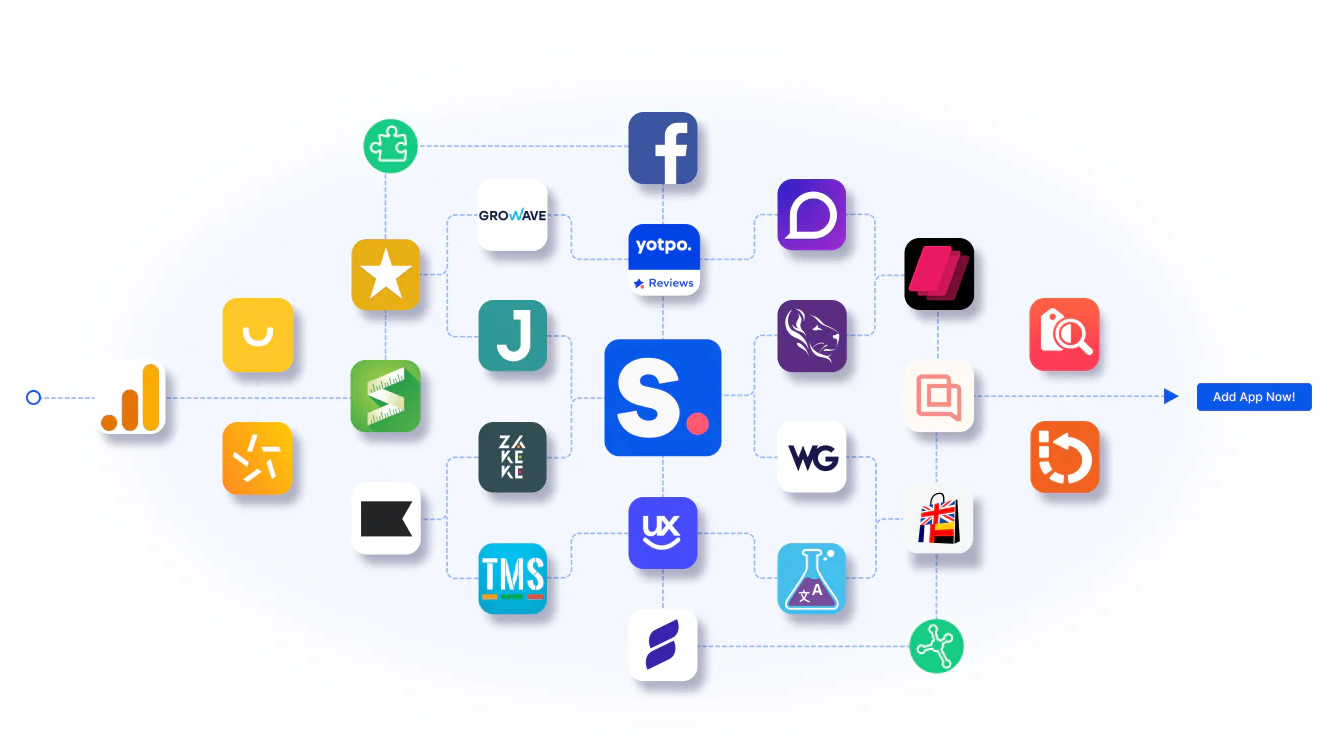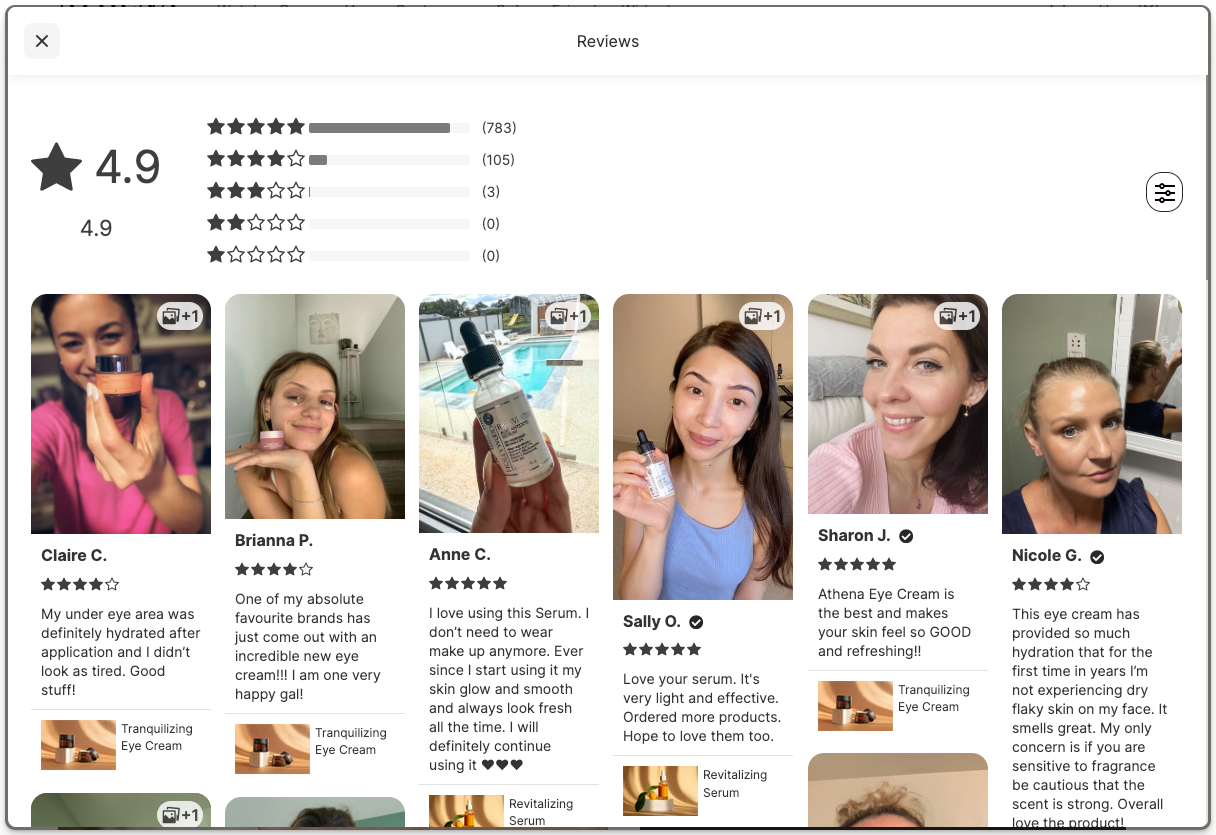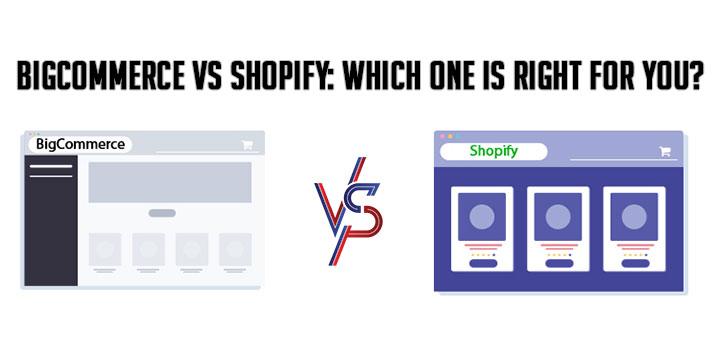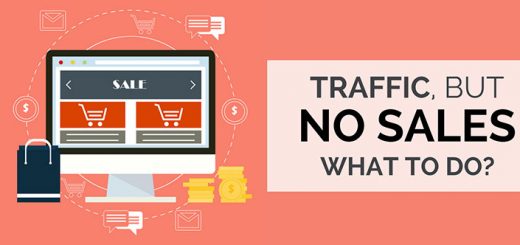How to Avoid 7 Common Shopify Mistakes and Grow Your Store
Shopify is a great platform for starting and running an online store. It offers a range of features and benefits that make it easy and convenient for anyone to sell online. However, Shopify is not a magic bullet that guarantees success. There are many mistakes that new and experienced store owners can make that can hurt their sales and growth.
In this article, we will share with you some of the most common Shopify mistakes that you should avoid, and how you can overcome them. These mistakes are based on the real experiences of a Shopify store owner who managed to dodge them and grow his store. We will also provide you with some tips and resources that you can use to improve your store and avoid these pitfalls.
Mistake 1: Misunderstanding Your Audience
One of the biggest mistakes that you can make as a Shopify store owner is to assume that you know who your target audience is, without doing proper market research. If you don’t understand your audience’s needs, preferences, pain points, and motivations, you won’t be able to create products and messages that resonate with them and persuade them to buy from you.
To avoid this mistake, you need to do thorough market research and validate your assumptions. You can use various methods and tools to gather data and insights about your potential customers, such as:
- Surveys: You can use online tools like SurveyMonkey or Typeform to create and distribute surveys to your target audience. You can ask them questions about their demographics, interests, challenges, goals, and opinions about your products or niche. You can also offer incentives like discounts or freebies to encourage participation.
- Social media: You can use social media platforms like Facebook, Instagram, or Twitter to interact with your target audience and learn more about them. You can join relevant groups, follow hashtags, post polls, ask questions, and monitor comments and feedback. You can also use social media analytics tools like Hootsuite or Sprout Social to track and measure your social media performance and engagement.
- Competitor analysis: You can use tools like SimilarWeb or SEMrush to analyze your competitors’ websites and marketing strategies. You can learn from their strengths and weaknesses, and identify gaps and opportunities in the market. You can also check their customer reviews and testimonials to see what their customers like and dislike about them.
By doing market research, you can gain a deeper understanding of your audience and create a customer persona that represents your ideal customer. A customer persona is a fictional profile that describes your customer’s characteristics, behaviors, and goals. You can use this persona to guide your product development, marketing, and branding decisions, and to create a more personalized and relevant customer experience.
Mistake 2: Skimping on Design
Another common mistake that you can make as a Shopify store owner is to neglect the design and aesthetics of your store. Your store’s design is the first impression that your visitors get of your brand and products. If your store looks generic, unprofessional, or unappealing, you will lose your visitors’ trust and interest, and they will bounce off your site.
To avoid this mistake, you need to invest time and effort in creating a custom, branded, and attractive store design. You can use various tools and resources to help you with this, such as:
- Canva: Canva is a free online tool that allows you to create stunning graphics and visuals for your store. You can use Canva to design your logo, banners, icons, images, and more. You can choose from thousands of templates, fonts, colors, and elements, or create your own from scratch. You can also use Canva to create social media posts, flyers, brochures, and other marketing materials for your store.
- Shopify themes: Shopify offers hundreds of themes that you can use to customize the look and feel of your store. You can browse and filter themes by industry, style, features, and price. You can also preview and test themes before installing them on your store. You can use Shopify’s theme editor to modify and adjust various aspects of your theme, such as colors, fonts, layouts, and more.
- Shopify experts: Shopify experts are professionals who can help you with various aspects of your store, such as design, development, marketing, and more. You can hire Shopify experts to create a custom and unique store design for you or to improve and optimize your existing store design. You can find and contact Shopify experts on Shopify’s experts marketplace, where you can also see their portfolios, reviews, and rates.
By creating a custom, branded, and attractive store design, you can stand out from the crowd and capture your visitors’ attention and interest. You can also create a consistent and coherent brand identity and story, that reflects your values and vision, and that connects and resonates with your audience.
Mistake 3: Ignoring the User Experience
A third common mistake that you can make as a Shopify store owner is to ignore the user experience of your store. The user experience is how your visitors interact with and navigate your store, and how they feel about it. If your store has a poor user experience, such as slow loading speed, confusing navigation, broken links, or unclear information, you will frustrate and annoy your visitors, and they will leave your site without buying anything.
To avoid this mistake, you need to optimize and improve the user experience of your store. You can use various methods and tools to do this, such as:
- Customer feedback: You can use online tools like Hotjar or Qualaroo to collect and analyze customer feedback on your store. You can use feedback forms, surveys, polls, and ratings to ask your customers about their satisfaction, expectations, and suggestions for your store. You can also use live chat or email to communicate with your customers and address their questions and issues.
- Session recording: You can use online tools like Lucky Orange or Smartlook to record and watch how your visitors interact with your store. You can see where they click, scroll, hover, and exit, and what they do on each page. You can also use heatmaps to visualize the most and least popular areas of your store. This can help you identify and fix any problems or bottlenecks that affect your store’s performance and usability.
- A/B testing: You can use online tools like Google Optimize or Optimizely to conduct A/B testing on your store. A/B testing is a method of comparing two or more versions of a web page or element, such as a headline, image, button, or color, to see which one performs better. You can use A/B testing to experiment and optimize various aspects of your store, such as conversions, sales, and revenue.
By optimizing and improving the user experience of your store, you can create a smooth and enjoyable customer journey, that leads your visitors from landing to checkout. You can also increase your customer satisfaction, loyalty, and retention, and reduce your bounce rate, cart abandonment, and customer churn.
Mistake 4: Getting Swamped with Manual Tasks
A fourth common mistake that you can make as a Shopify store owner is to get swamped with manual tasks that take up your time and energy. Running an online store involves a lot of tasks and processes, such as order processing, inventory management, customer service, accounting, and more. If you do everything manually, you will waste a lot of time and resources, and you will have less time for growth-focused activities, such as marketing, product development, and strategy.
To avoid this mistake, you need to automate and streamline your tasks and processes. You can use various tools and features to help you with this, such as:
- Shopify automation: Shopify offers a range of automation features and tools that can help you automate and simplify your tasks and processes. For example, you can use Shopify Flow to create workflows that trigger actions based on certain conditions, such as sending an email, updating inventory, or tagging customers. You can also use Shopify Scripts to customize and automate your checkout and cart experiences, such as applying discounts, creating bundles, or offering free shipping. You can also use Shopify Launchpad to automate and schedule events, such as sales, product releases, or campaigns.
- Shopify apps: Shopify has a large and diverse app store, where you can find hundreds of apps that can help you automate and streamline your tasks and processes. For example, you can use apps like Loox or Stamped.io to automate and collect product reviews from your customers. You can also use apps like OrderlyEmails or UpOrder to automate and customize your email notifications and receipts. You can also use apps like Back in Stock or Pre-order Now to automate and manage your inventory and stock levels.
By automating and streamlining your tasks and processes, you can save time and money, and increase your efficiency and productivity. You can also focus more on your core business activities, and grow and scale your store faster and easier.
Mistake 5: Having a Narrow Marketing View
A fifth common mistake that you can make as a Shopify store owner is to have a narrow marketing view and rely on only one or two marketing channels. Marketing is the key to attracting and converting customers to your store. If you limit your marketing efforts to only one or two channels, you will miss out on a lot of potential customers and opportunities, and you will limit your reach and growth potential.
To avoid this mistake, you need to adopt a multi-channel marketing strategy and diversify your marketing efforts across different channels and platforms. You can use various methods and tools to do this, such as:
- Content marketing: Content marketing is the creation and distribution of valuable and relevant content, such as blogs, videos, podcasts, ebooks, infographics, and more, to attract and engage your target audience. You can use content marketing to educate, inform, entertain, and inspire your audience, and to showcase your products and benefits, and build trust and authority in your niche. You can use tools like WordPress, Medium, YouTube, or Anchor to create and distribute your content.
- Email marketing: Email marketing is the use of email to communicate and market to your existing and potential customers. You can use email marketing to send newsletters, promotions, updates, reminders, and more, and to nurture and retain your customers. You can use tools like Klaviyo, Mailchimp, or Omnisend to create and manage your email campaigns.
- Social media marketing: Social media marketing is the use of social media platforms like Facebook, Instagram, Twitter, Pinterest, or TikTok to connect and engage with your audience, and to promote your products and brand. You can use social media marketing to share your content, showcase your products, run contests, get feedback, and more, and to increase your brand awareness and loyalty. You can use tools like Hootsuite, Buffer, or Later to plan and schedule your social media posts.
- Paid advertising: Paid advertising is the use of paid online channels like Google Ads, Facebook Ads, Instagram Ads, or Pinterest Ads to drive traffic and sales to your store. You can use paid advertising to target and reach your ideal customers, based on their demographics, interests, behaviors, and more. You can also use paid advertising to test and optimize your products and ads, and to scale your business. You can use tools like Google Analytics, Facebook Pixel, or Shopify Reports to track and measure your paid advertising performance and ROI.
By adopting a multi-channel marketing strategy, you can reach and attract more customers, and cater to different customer preferences and behaviors. You can also increase your traffic and sales, and reduce your dependence and risk on any single channel.
Mistake 6: Overloading with Apps
A sixth common mistake that you can make as a Shopify store owner is to overload your store with too many apps. Apps are great for adding features and functionality to your store, but they can also have negative effects. Too many apps can slow down your store’s loading speed, affect your user experience, and cause compatibility and security issues. They can also increase your costs and clutter your backend.

To avoid this mistake, you need to be selective and careful with the apps that you install and use on your store. You can use the following tips and criteria to help you with this:
- Review and remove non-essential apps: You should regularly review and audit the apps that you have on your store, and remove any apps that are not essential or useful for your store. You should also uninstall any apps that you are not using or that are not working properly. This can help you improve your store’s speed and performance, and reduce your costs and risks.
- Choose quality over quantity: You should focus on the quality and value of the apps that you use, rather than the quantity and variety. You should look for apps that are well-designed, well-reviewed, well-supported, and well-updated, and that offer the features and benefits that you need and want. You should also look for apps that are compatible and integrated with your store and other apps, and that follow the best practices and standards of Shopify.
- Compare and test apps before installing: You should do your research and comparison before installing any apps on your store. You should read the app’s description, features, reviews, and ratings, and check the app’s demo or trial version if available. You should also test the app’s functionality and compatibility on your store, and monitor its impact on your store’s speed and performance.
- Use multipurpose apps: You should look for apps that offer multiple features and functions in one app, rather than using separate apps for each function. For example, you can use apps like Loox or Stamped.io to collect and display product reviews, ratings, photos, and videos, as well as to offer loyalty programs, referrals, and coupons. You can also use apps like OrderlyEmails or UpOrder to customize and automate your email notifications and receipts, as well as to offer upsells, cross-sells, and discounts.
By being selective and careful with the apps that you use, you can enhance and optimize your store’s features and functionality, without compromising your store’s speed and performance, or your user experience and security.
Mistake 7: Overlooking Social Proof
The seventh and final common mistake that you can make as a Shopify store owner is to overlook the importance and impact of social proof. Social proof is the evidence and validation that your store and products are trustworthy and valuable, based on the opinions and actions of other people. Social proof can influence and persuade your visitors and customers to buy from you and to trust and recommend you.
To avoid this mistake, you need to leverage and showcase social proof on your store and marketing channels. You can use various methods and tools to do this, such as:
- Product reviews: Product reviews are one of the most powerful forms of social proof, as they show the feedback and experience of your customers with your products. Product reviews can help you increase your conversions, sales, and revenue, as well as your customer satisfaction, loyalty, and retention. You can use tools like Loox or Stamped.io to collect and display product reviews from your customers, and to add features like ratings, photos, videos, and Q&A to your reviews.
- Testimonials: Testimonials are another form of social proof, where you showcase the stories and results of your customers with your products. Testimonials can help you build trust and credibility, and to demonstrate the value and benefits of your products. You can use tools like Fera or Judge.me to collect and display testimonials from your customers, and to add features like social proof notifications, badges, and counters to your testimonials.
- Social media: Social media is another form of social proof, where you showcase the engagement and interaction of your audience and customers with your brand and products. Social media can help you increase your brand awareness, reach, and engagement, and to drive traffic and sales to your store. You can use tools to create and display stunning product showcases on your social platforms, and to increase your social proof and connection with your customers.

By leveraging and showcasing social proof on your store and marketing channels, you can increase your store’s attractiveness and appeal, and influence and persuade your visitors and customers to buy from you. You can also increase your store’s authority and reputation, and grow your customer base and referrals.
Conclusion
We hope you found this article helpful and informative. These are the seven common Shopify mistakes that you should avoid, and how you can overcome them. These mistakes are based on the real experiences of a Shopify store owner who managed to dodge them and grow his store. We also provided you with some tips and resources that you can use to improve your store and avoid these pitfalls.
Whether you are just starting or looking to refine your existing store, remember that each mistake is an opportunity for growth and improvement. You can learn from your own and others’ mistakes, and use the best strategies, tools, and practices to create a successful and profitable Shopify store.
Thank you for reading and happy selling!








